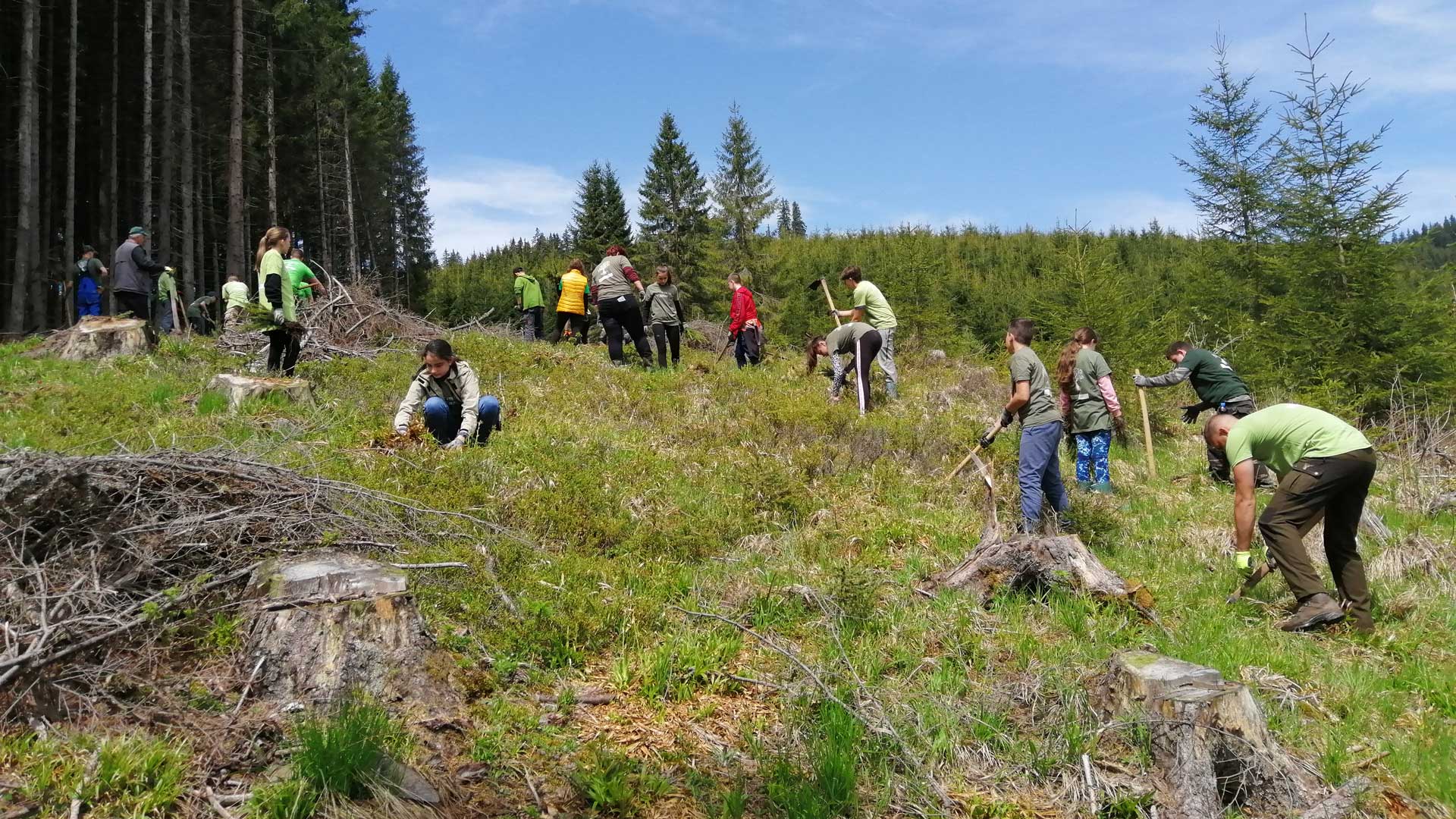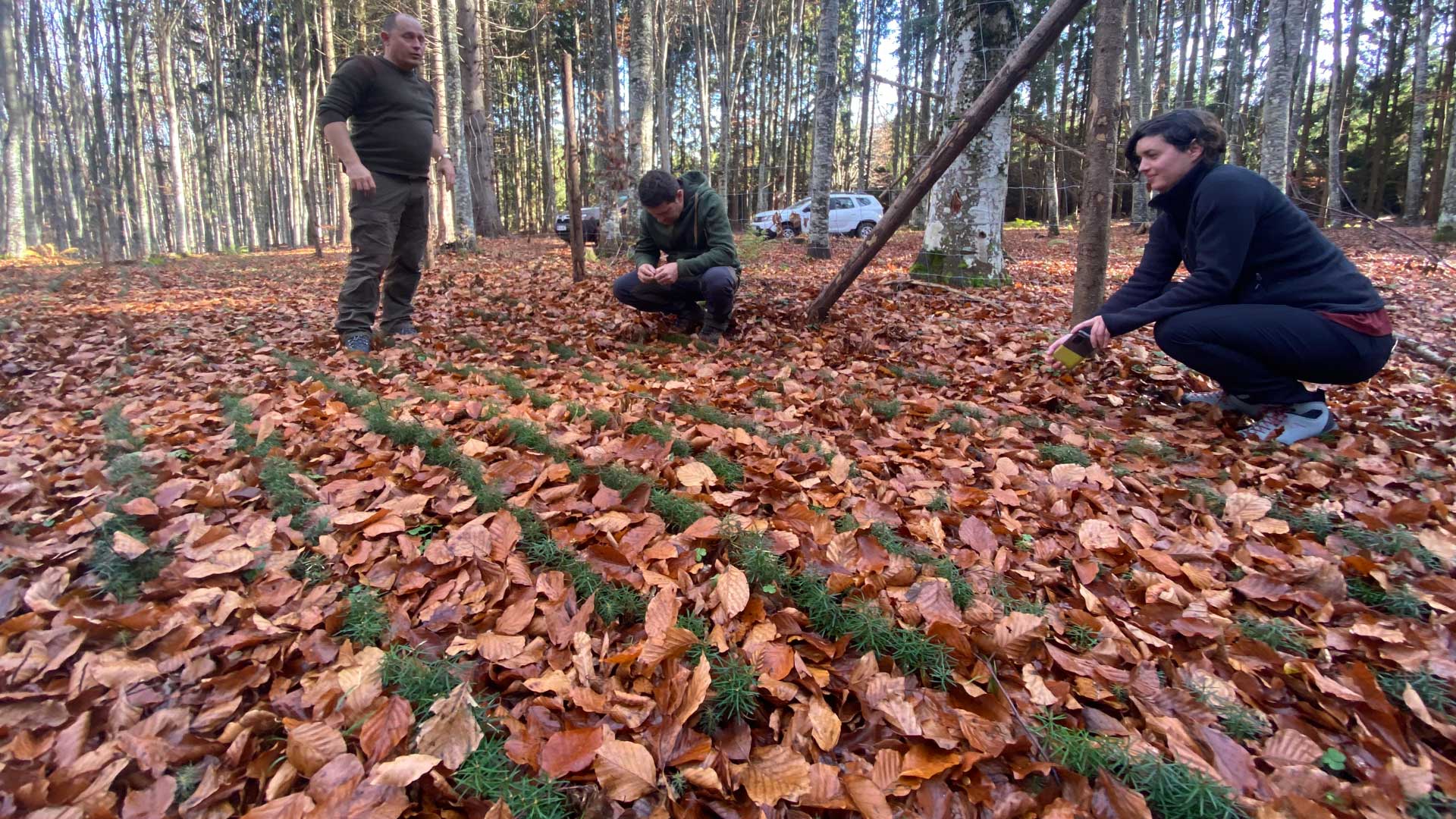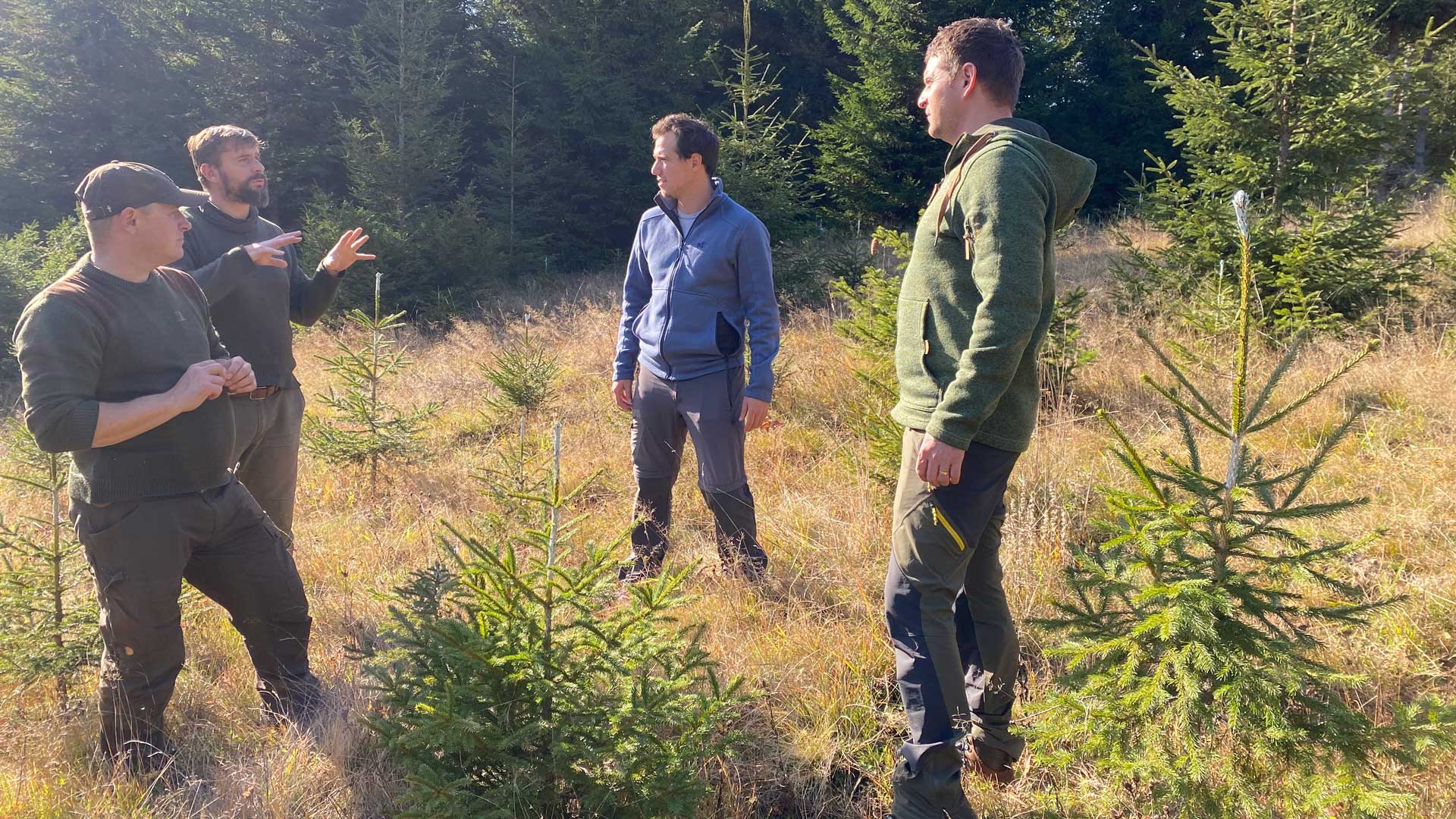In Harghita County, several plots belonging to a local church were previously left empty as unused pastures.
In 2019, an initiative began to replant these fields and transform them into forested land. 20,000 trees were planted over 5 hectares; species planted were European Spruce, Sycamore, Larch and Wild Cherry.
The plots will be supervised by local forestry authorities, with yearly monitoring to assess the survival rate until “standalone status” is achieved. This status is declared when the average height of the tree is 1.2 meters and when 80% of the soil is covered.



